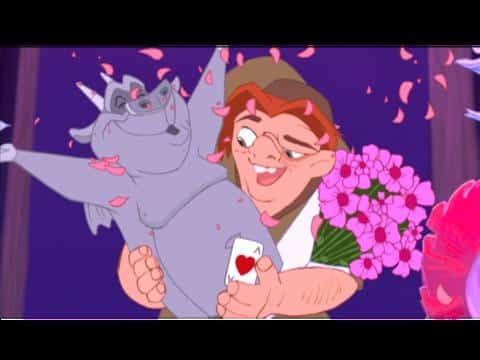The Hunchback of Notre Dame is a timeless tale that has captured the hearts of readers and viewers across the globe.
Its unique blend of romance, drama, and tragedy make it an unforgettable experience.
It’s a story of love, acceptance, and the triumph of the human spirit over adversity.
This article is an in-depth exploration of Victor Hugo’s masterpiece, its adaptations, and the rich universe it has inspired.
Victor Hugo: A Brief Biography and Notable Works
Victor Hugo, born in 1802, was a French poet, novelist, and dramatist of the Romantic movement.
His notable works include ‘Les Misérables’, ‘The Man Who Laughs’, and, of course, ‘The Hunchback of Notre Dame’.
Hugo’s works have been celebrated for their vivid characters and intricate plot lines, which often explored political and social issues of the time.
Book Summary of ‘The Hunchback of Notre Dame’
The Hunchback of Notre Dame is set in Paris, in the late Middle Ages.
It revolves around three main characters: Quasimodo, the deformed bell-ringer of Notre Dame; Esmeralda, a beautiful gypsy; and Claude Frollo, the archdeacon of Notre Dame.
The story unfolds against the backdrop of the magnificent Notre Dame Cathedral and delves into themes of love, obsession, and social injustice.
Explaining the Ending of ‘The Hunchback of Notre Dame’
In the end, Quasimodo, in a fit of despair and rage, throws Frollo off the cathedral, avenging Esmeralda’s death.
However, the tragedy doesn’t end there.
Quasimodo disappears, and years later, when the vault of Montfaucon is opened, two skeletons are found intertwined – one with a crooked spine, and the other with a gypsy pendant.
‘The Hunchback of Notre Dame’ Movie Summary
The Disney adaptation of ‘The Hunchback of Notre Dame’, directed by Gary Trousdale and Kirk Wise, deviates from the original in several aspects, most notably in its ending.
In this version, Quasimodo saves Esmeralda and defeats Frollo. The movie ends on a happier note, with Quasimodo being accepted by the people of Paris.
Analysis of ‘The Hunchback of Notre Dame’ Film
The film does a commendable job of capturing the essence of Hugo’s novel while making it suitable for a younger audience.
The animation, music, and voice acting are top-notch. The film brilliantly portrays the themes of acceptance and inner beauty.
Parent Guide to ‘The Hunchback of Notre Dame’
Parents should know that ‘The Hunchback of Notre Dame’ contains some dark themes and intense scenes that might be upsetting for younger children.
However, it also offers valuable lessons about acceptance, compassion, and judging others by their character rather than their appearance.
Who’s Who in ‘The Hunchback of Notre Dame’
Quasimodo, Esmeralda, and Frollo are the central figures.
Other notable characters include Phoebus, the captain of the King’s Archers, and the mischievous gargoyles Victor, Hugo, and Laverne.
Notable Quotes from ‘The Hunchback of Notre Dame’
Hugo’s novel is filled with memorable quotes, such as Quasimodo’s heartbreaking “Why was I not made of stone, like thee?” and Frollo’s ominous “What I do, I do for the good of France.”
‘The Hunchback of Notre Dame’ Soundtrack by Alan Menken
The Hunchback of Notre Dame’s soundtrack, composed by Alan Menken, is a masterpiece in its own right.
Songs like “Out There”, “God Help the Outcasts”, and “Hellfire” perfectly encapsulate the story’s themes of longing, hope, and despair.
Curiosities about ‘The Hunchback of Notre Dame’
One interesting tidbit about ‘The Hunchback of Notre Dame’ is that it was originally published under the title ‘Notre-Dame de Paris’.
Hugo intended for the novel to raise awareness about the value of Gothic architecture, which was being neglected at the time.
Tips for Cosplaying and Dressing Like Characters from ‘The Hunchback of Notre Dame’
From Esmeralda‘s colourful gypsy attire to Quasimodo‘s simple bell-ringer’s garb, ‘The Hunchback of Notre Dame’ offers plenty of inspiration for cosplayers and costume enthusiasts alike.
The key is to focus on the details that define each character.
The Remake, Sequel, and Spin-off of ‘The Hunchback of Notre Dame’
Disney’s ‘The Hunchback of Notre Dame’ has spawned a direct-to-video sequel and a stage musical.
There have also been numerous film and TV adaptations of Hugo’s novel, both live-action and animated.
Other Media by Gary Trousdale and Kirk Wise
Gary Trousdale and Kirk Wise, the directors of Disney’s ‘The Hunchback of Notre Dame’, have worked on several other acclaimed animated films, including ‘Beauty and the Beast’ and ‘Atlantis: The Lost Empire’.
Other Works by Victor Hugo and Similar Media to ‘The Hunchback of Notre Dame’
If you enjoyed ‘The Hunchback of Notre Dame’, you might also like Hugo’s other works, such as ‘Les Misérables’ and ‘The Man Who Laughs’.
Other similar media include ‘Beauty and the Beast’, ‘Pocahontas’, and ‘Mulan’.
Book Club Questions for ‘The Hunchback of Notre Dame’
Discussing ‘The Hunchback of Notre Dame’ in a book club setting can lead to some fascinating conversations.
Some questions to consider might include: How does Hugo portray the societal norms of the time? How does the setting contribute to the story?
Video Games Based on ‘The Hunchback of Notre Dame’
‘The Hunchback of Notre Dame’ has been adapted into several video games over the years.
These games offer fans a chance to step into the shoes of their favourite characters and explore the world of Notre Dame.
Travel Guide to Visit ‘The Hunchback of Notre Dame’ Locations
Visiting the real-life locations featured in ‘The Hunchback of Notre Dame’ can be a magical experience.
Start with the Notre Dame Cathedral itself, then explore the rest of Paris, from the Seine River to the Palace of Justice.
Conclusion
From its captivating characters to its hauntingly beautiful setting, ‘The Hunchback of Notre Dame’ is a true literary and cinematic gem.
Whether you’re a longtime fan or new to the story, there’s always more to discover.
So, dive in, explore, and let the magic of ‘The Hunchback of Notre Dame’ enchant you.














